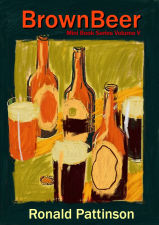The grist is more complicated than for XP and XXP. In that there’s more than just base malt. There’s the huge added excitement of a little sugar. In the form of dextro-maltose. For which I’ve substituted No. 2 invert.
The presence of dextro-maltose, along with the massive hopping rate of 15.75 lbs per quarter (336 lbs) of malt and the fact that it was racked into a butt and hogsheads are a dead giveaway. A giveaway that this was a true Stock Pale Ale. The dextro-maltose being the food for a long, slow secondary fermentation.
The hops were Californian, Württemberg, American and East Kent from the 1883 harvest along with American from 1882. For dry hops, there were American and Württemberg, both from 1883.
This looks like a proper hard-core Stock Pale Ale. Which would have undergone a minimum of twelve months ageing.
| 1884 William Younger Special Export | ||
| pale malt | 14.50 lb | 95.08% |
| No. 2 invert | 0.75 lb | 4.92% |
| Cluster 120 min | 3.50 oz | |
| Cluster 60 min | 1.00 oz | |
| Hallertau 60 min | 2.50 oz | |
| Goldings 30 min | 2.25 oz | |
| Hallertau dry hops | 1.00 oz | |
| Cluster dry hops | 1.00 oz | |
| OG | 1068 | |
| FG | 1021 | |
| ABV | 6.22 | |
| Apparent attenuation | 69.12% | |
| IBU | 132 | |
| SRM | 7 | |
| Mash at | 151º F | |
| Sparge at | 163º F | |
| Boil time | 120 minutes | |
| pitching temp | 59º F | |
| Yeast | WLP028 Edinburgh Ale | |












































































3 comments:
So this is what Orval is inspired by?
Oscar
In the past I've used maltose rice syrup from Chinese supermarkets, quite cheap in tubs about the size of a margarine tub. They use it to give Peking Duck and pork Char Sui that sweet glaze and at home they use it like golden syrup which it resembles in taste and colour but is far thicker.
There is a high-dextrin glucose syrup by Dr. Oetker for baking called Liquid Glucose that is pretty much what one would need here.
Post a Comment